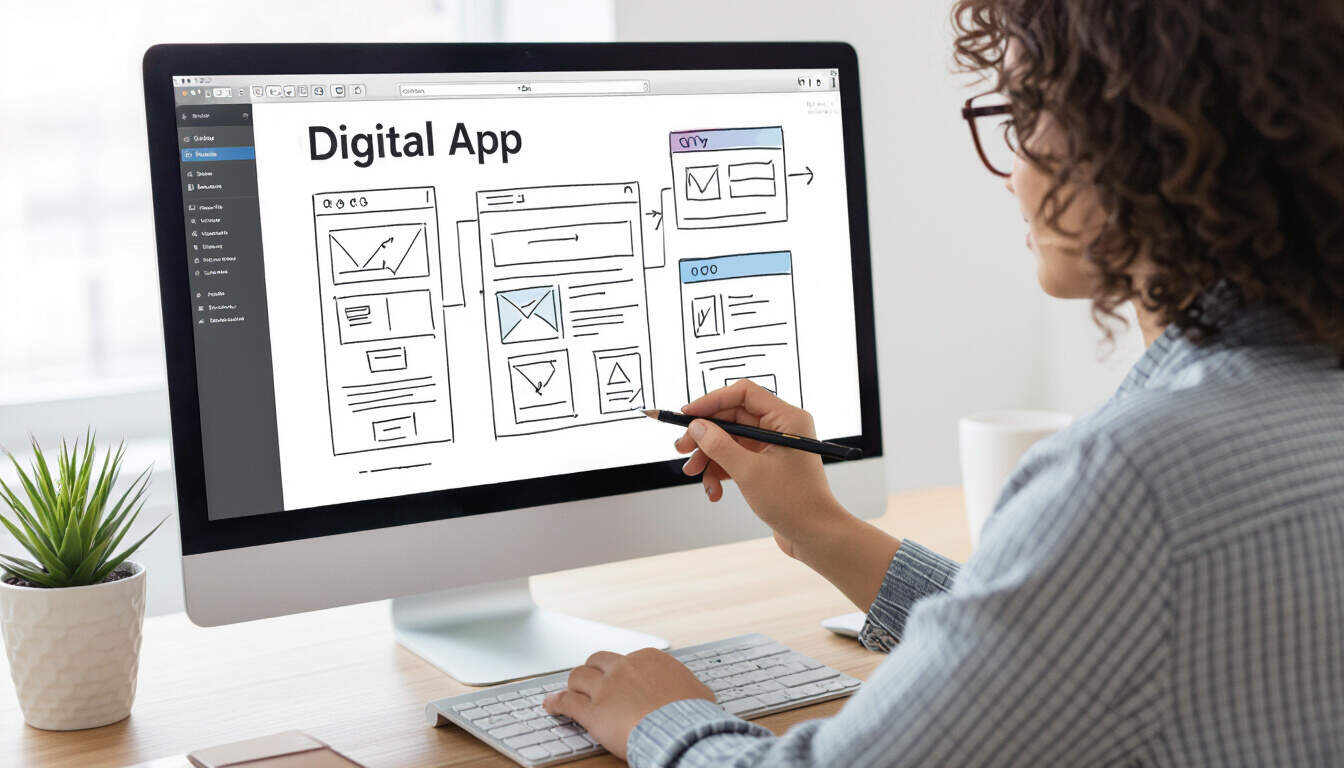Overview of Prototyping Tools for Solo SaaS Development
 by Shanie Goodwin
by Shanie Goodwin
Prototyping tools help solo SaaS developers build and test ideas quickly, saving time and resources. This overview covers key options, their features, and practical steps to integrate them into your workflow for efficient app creation.

Prototyping tools play a key role in solo SaaS development by allowing creators to visualize and refine ideas before full coding begins. These tools enable developers to create interactive models that mimic app behavior, making it easier to spot issues early.
In solo SaaS, prototyping is essential for iterating on designs without extensive commitments. For instance, a developer building a simple project management app can use these tools to sketch user interfaces and test flows, ensuring the final product meets user needs.
One major advantage is the ability to collaborate virtually. Tools like Figma offer real-time editing features, which help solo entrepreneurs gather feedback from potential users. This approach speeds up the development process and reduces costs associated with revisions.
Let's explore some popular options. Figma stands out for its web-based interface and ease of use, allowing users to create detailed prototypes with drag-and-drop elements. Adobe XD provides similar capabilities with strong integration for design assets, ideal for developers transitioning from graphic work.
Another option is Sketch, which focuses on vector-based designs and is particularly useful for macOS users. For those prioritizing mobile app prototyping, InVision offers interactive prototypes that simulate app navigation, helping to test responsiveness on different devices.
Benefits for Solo Developers
Using these tools can significantly improve workflow efficiency. They allow for quick iterations, where changes can be made in minutes rather than hours of coding. For example, a solo developer working on a subscription-based analytics tool can prototype dashboard layouts to ensure intuitive data display before backend implementation.
SaaS development often involves balancing multiple tasks, and prototyping helps prioritize features. By creating a basic model, developers can identify core functionalities that drive value, such as user authentication or data visualization.
Step-by-Step Guide to Prototyping
Getting started with prototyping involves a few straightforward steps. First, define your app's core features based on user requirements. For a solo SaaS project like a task tracker, list essential elements such as task lists and notifications.
Next, select a tool that fits your needs. If you're new to this, begin with Figma due to its free tier and community resources. Import any necessary assets, like icons or images, and start building wireframes. These are simple sketches outlining the app's structure.
Once the wireframe is ready, add interactivity. Link screens to simulate user journeys, such as clicking a button to open a new view. Test the prototype on various devices to check for usability issues. Finally, share it with beta users for feedback and make adjustments accordingly.
In practice, a developer might prototype a feature for handling user profiles in a CRM app. This involves creating forms for input and viewing how data populates, ensuring the design is clean and functional.
Real-World Applications
Many solo developers have successfully used prototyping to launch products. Consider a case where an independent creator built a budgeting app. By prototyping the expense tracking interface first, they refined the user experience based on early tester input, leading to higher adoption rates.
Another example involves a developer crafting an e-commerce platform. Prototyping helped visualize the checkout process, identifying pain points like payment integration that could affect user retention.
These stories highlight how tools can turn abstract ideas into tangible prototypes, fostering innovation in solo projects.
Choosing the Right Tool
When selecting a prototyping tool, consider factors like cost, learning curve, and integration options. Free tools such as Figma or Pencil provide entry points for beginners, while paid versions offer advanced features for more complex SaaS apps.
For instance, if your project requires animations, Adobe XD might be preferable due to its built-in effects. Always test a few options to see which aligns best with your development style.
In summary, incorporating prototyping into your solo SaaS workflow can lead to better outcomes. By focusing on practical implementation and user-centered design, developers can create more effective applications.
To wrap up, remember that regular prototyping practices build stronger foundations for your projects, ultimately contributing to long-term success in SaaS creation.
